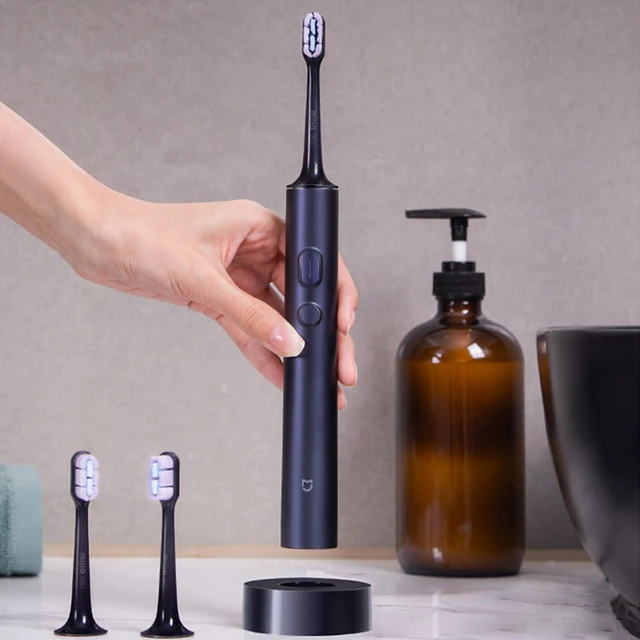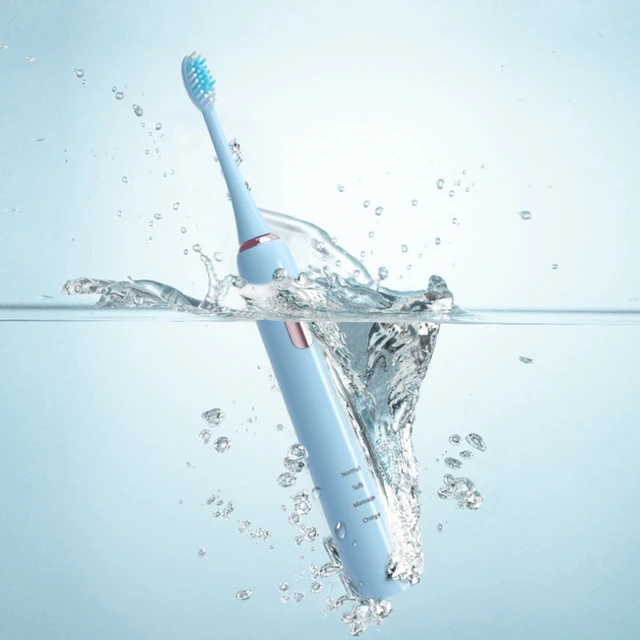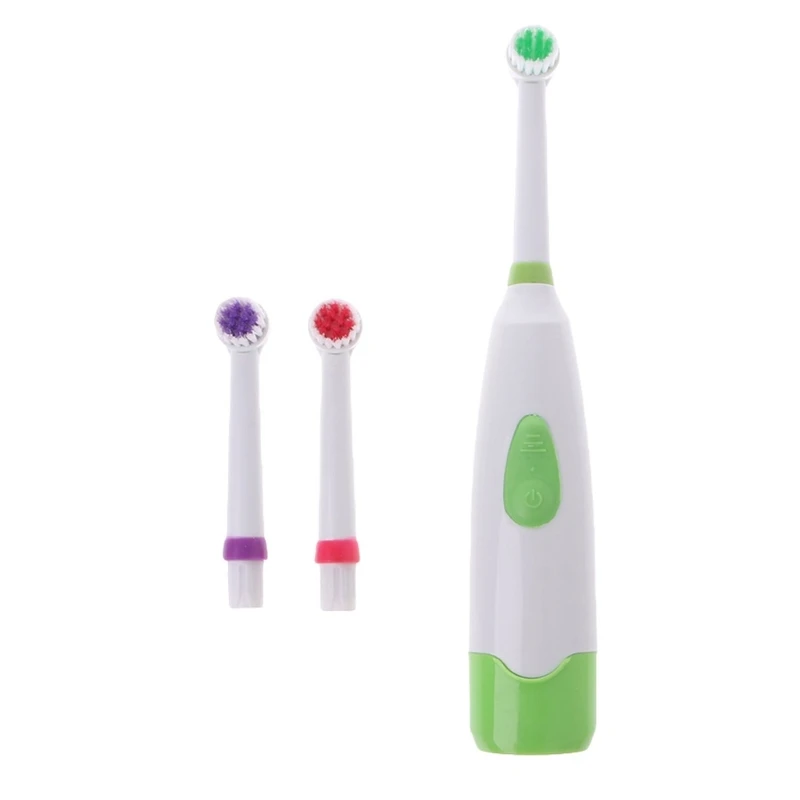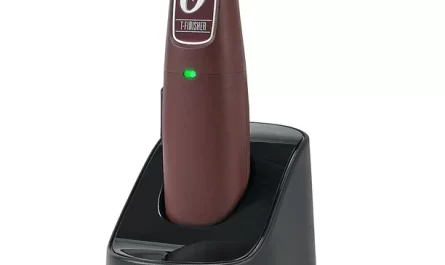Electric toothbrushes have revolutionized oral hygiene, encouraging more effective brushing habits and ensuring better dental health. Understanding how does electric toothbrush work not only demystifies its technology but also enhances our appreciation of its benefits. This article dives deep into the mechanics, advantages, and various types of electric toothbrushes, as well as studies supporting their efficacy.
The Basics of Electric Toothbrush Design
Components of an Electric Toothbrush
Electric toothbrushes are designed to make brushing more efficient than traditional toothbrushes. The primary components include:
- Handle: This is often ergonomic, designed for comfortable grip and ease of use during brushing.
- Brush Head: Comprising bristles set in a specific pattern for optimal cleaning; interchangeable brush heads allow for personalized care (e.g., soft, firm, or specialized bristle designs).
- Motor: A battery-powered mechanism that provides vibrations or oscillations, automating the brushing motion.
- Power Source: Rechargeable batteries (commonly lithium-ion) or replaceable batteries that supply energy to the toothbrush.
- Timing Mechanism: Many electric toothbrushes feature timers to ensure users brush for the recommended two minutes.
How Do These Components Work Together?
To begin the brushing process, the user presses the power button, activating the motor. As the motor spins or vibrates, it drives the brush head to move in specific patterns, creating rapid movements that dislodge plaque and food particles from teeth.
For instance, some models employ oscillating-rotating technology, where the brush head spins in one direction, then the other, thereby achieving a thorough clean. Others pulse or vibrate at high frequencies, effectively removing debris with repetitive small movements. This intricate interplay of components maximizes the effectiveness of the brushing process, removing more plaque than manual brushing.
The Science Behind Effective Brushing
Plaque Removal Mechanism
The main purpose of brushing is to remove plaque, a sticky film of bacteria that forms on teeth. The movement of an electric toothbrush helps disrupt and displace this biofilm more effectively than manual toothbrushes.
Research indicates that electric toothbrushes can reduce plaque by approximately 21% compared to their manual counterparts, primarily due to their superior motion technology. Various studies show that the oscillation and high frequency of movement help in creating momentum that physically loosens and removes plaque.
The Role of Bristle Design
Another crucial factor that affects how an electric toothbrush works is the design of the bristles. Electric toothbrushes often feature specialized bristle patterns that enhance their cleaning abilities:
- Bristle Length and Density: Longer bristles can reach deeper into the grooves of teeth, while densely packed bristles offer a broader cleaning surface.
- Flexibility: Some models have soft, flexible bristles that can adapt to the contours of the teeth and gums, providing a gentler yet effective cleaning motion.
These design considerations are integral to maximizing the toothbrush’s effectiveness while minimizing wear on both enamel and gums.
The Advantages of Using an Electric Toothbrush
Improved Plaque Removal
As previously mentioned, the effectiveness of electric toothbrushes in removing plaque is one of their standout features. Regular manual brushing may not always achieve the desired level of cleanliness, especially in difficult-to-reach areas. Electric toothbrushes simplify the entire process, making it easier to maintain consistent oral hygiene habits.
Built-in Timers and Pressure Sensors
Most electric toothbrushes come with built-in timers that ensure users brush for at least two minutes, the recommended duration by dental professionals.
Additionally, many models have pressure sensors that alert the user if they are brushing too hard, thus preventing damage to gums and enamel. This user-friendly technology not only helps in promoting proper brushing techniques but also educates users about the right pressure levels to maintain.
Encouragement for Consistent Oral Hygiene
The novelty of using an electric toothbrush often motivates individuals, particularly children, to brush their teeth more regularly. This enhanced motivation contributes to better dental hygiene over time, thus reducing the likelihood of cavities and gum disease.
The familiarity and ease of use can significantly alter one’s attitude towards oral care, encouraging a lifelong commitment to dental hygiene.
Types of Electric Toothbrushes
Rotating-oscillating Toothbrushes
These toothbrushes feature a head that oscillates in a circular motion. The movements help create a brushing action that mimics the motion of manual brushing while intensifying the result. Numerous studies indicate that oscillating-rotating toothbrushes are particularly effective at reducing plaque and gingivitis.
Sonic Toothbrushes
Using high-frequency vibrations, sonic toothbrushes produce rapid movements. The sound waves created help dislodge debris from teeth, effectively cleaning in hard-to-reach areas. Research supports their effectiveness, claiming they can reduce plaque to a greater extent than rotating toothbrushes.
Interdental Cleaners
Some electric toothbrushes incorporate features designed specifically for hard-to-reach areas. These may include specialized heads or attachments that target between-the-teeth cleaning akin to flossing. Such devices extend the utility of traditional brushing by catering to an often-overlooked aspect of dental care.
Smart Toothbrushes
The latest innovation in electric toothbrush technology is the development of smart toothbrushes. These devices sync with mobile applications to track brushing habits and provide real-time feedback. They often feature built-in sensors that collect data about pressure applied, bristle angle, and locations brushed. As users become more aware of their brushing habits, they are likely to make necessary adjustments for improved oral hygiene.
Addressing Common Concerns
Are Electric Toothbrushes Suitable for Everyone?
In general, electric toothbrushes are suitable for most people, including those with braces, dental implants, or other orthodontic work. However, individuals with specific dental conditions should consult their dentist for personalized recommendations. In some cases, particularly sensitive gums may require a gentler toothbrush option.
What About Cost?
While electric toothbrushes tend to be more expensive than manual toothbrushes, they offer extensive benefits and durability over time. The costs associated with maintaining oral health—fewer dental visits, cavity prevention, etc.—often outweigh the initial investment. Furthermore, many electric toothbrushes offer features such as replaceable heads and rechargeable batteries, providing value in the long run.
Environmental Concerns: Are They Sustainable?
While electric toothbrushes do use plastic components and batteries, many brands now focus on sustainability. Several manufacturers produce biodegradable brush heads or use recycled materials in their designs. Users can contribute to eco-friendliness by ensuring proper disposal and recycling of their devices.
Studies Supporting Electric Toothbrush Benefits
Research Findings
Numerous studies have delved into the comparative effectiveness of electric versus manual toothbrushes. An extensive meta-analysis of clinical trials revealed that electric toothbrush users showed a statistically significant reduction in plaque and gingivitis after just a few weeks of use. A substantial number of these studies advocate for the routine use of electric toothbrushes for improved oral hygiene.
Professional Recommendations
Dentists and dental hygienists frequently recommend electric toothbrushes, noting their superior cleaning efficiency. Health organizations, including the American Dental Association (ADA), emphasize how electric toothbrushes can be particularly beneficial for people with limited mobility or dexterity issues.
 Frequently Asked Questions About Electric Toothbrushes
Frequently Asked Questions About Electric Toothbrushes
Can I Use an Electric Toothbrush if I Have Sensitive Teeth?
Yes. Many electric toothbrushes come with sensitive modes designed to lessen pressure and vibrations, making them suitable for individuals with sensitive teeth or gums.
How Often Should I Replace My Electric Toothbrush Head?
It is generally recommended to replace the brush head every three months or sooner if the bristles become frayed. This helps maintain the effectiveness of the cleaning.
Can Kids Use Electric Toothbrushes?
Absolutely! Many electric toothbrushes are designed specifically for children, featuring smaller brush heads and softer bristles. The engaging designs can make brushing more appealing for younger users.
Conclusion:
Understanding how electric toothbrush work reveals the intricate and effective technology behind these modern dental tools. Their superior plaque-removal capabilities, built-in timings, and user-friendly designs have revolutionized oral hygiene practices, offering both convenience and improved health benefits.
As dental technology continues to evolve, electric toothbrushes represent a significant leap forward in maintaining optimal dental health. From specialized bristle designs to smart technology, electric toothbrushes cater to a wide variety of needs, from defensive cleaning to educational tools for children.
If you have not yet explored the benefits of an electric toothbrush, consider doing so—your dental health may thank you in the long run. The question remains: How does electric toothbrush work, and it certainly proves to be a pivotal factor in your quest for optimal oral hygiene.





